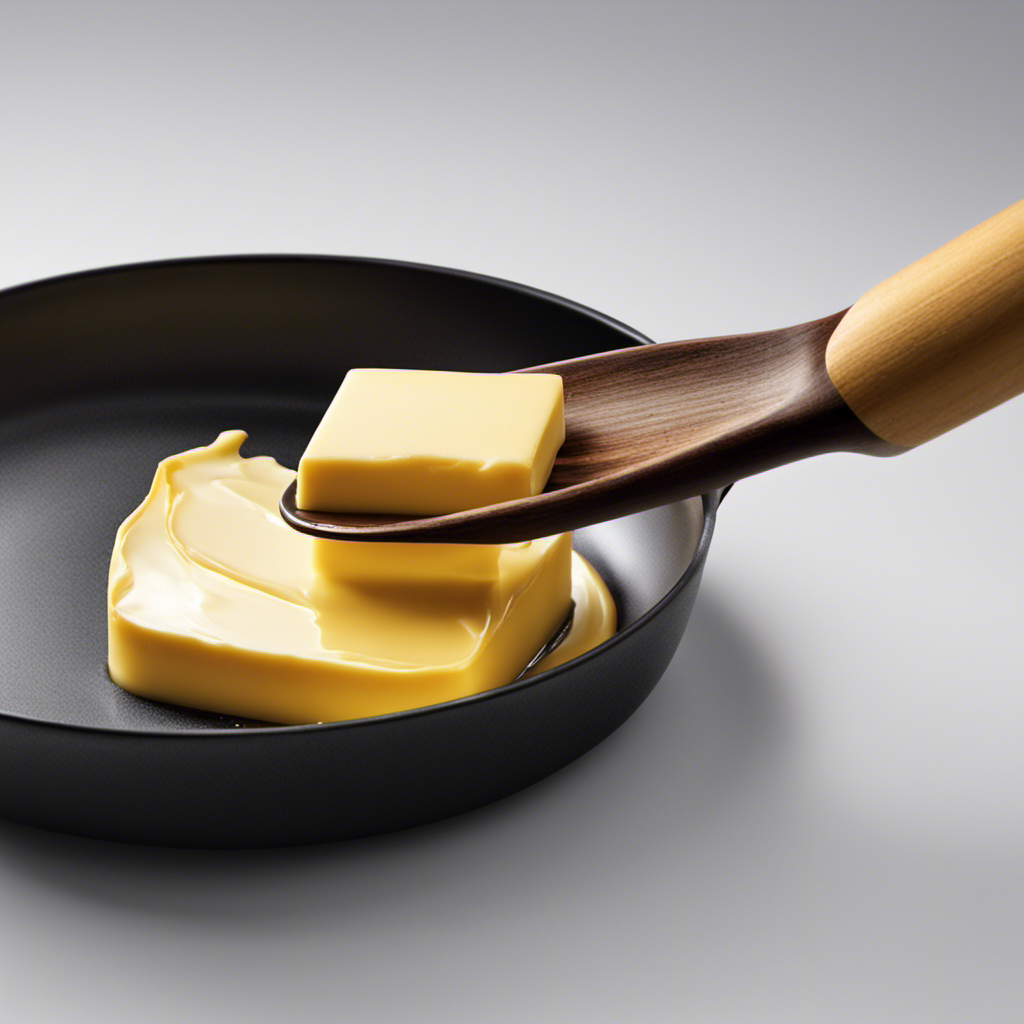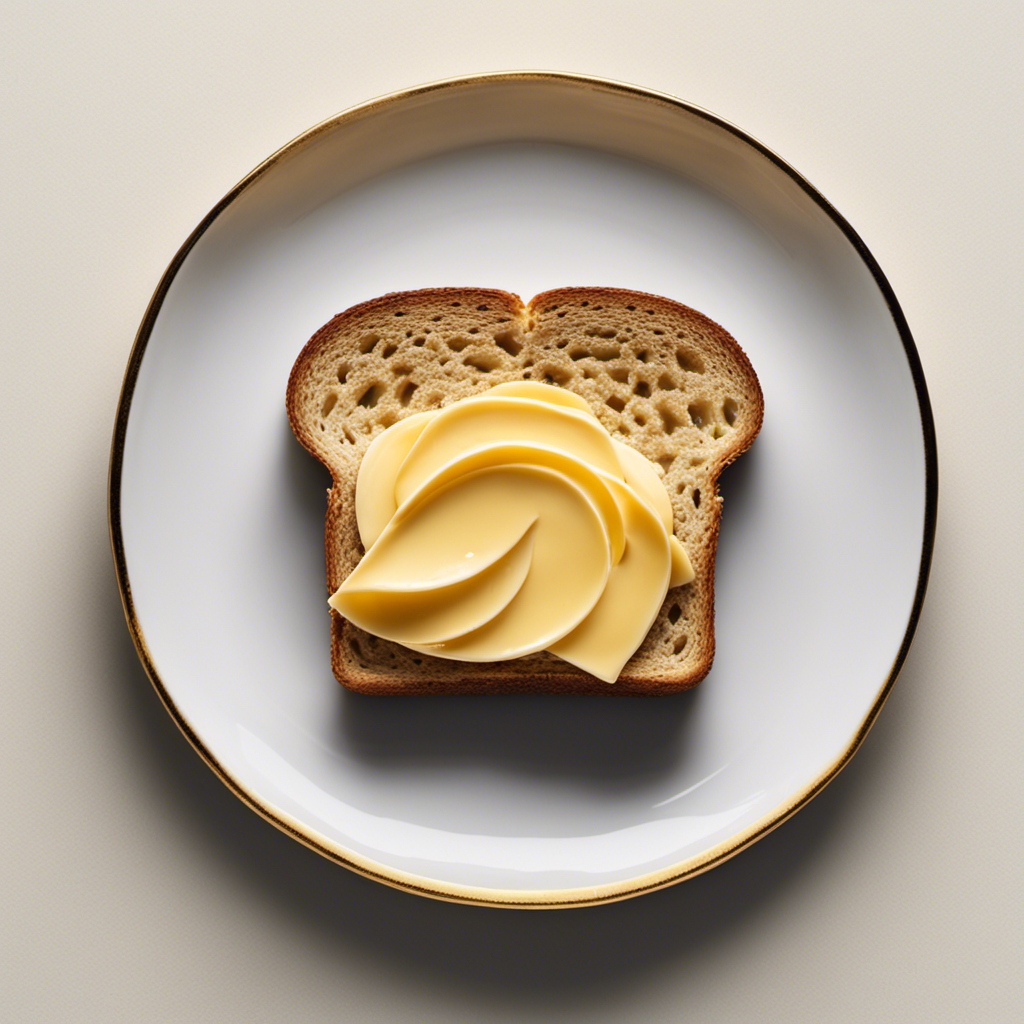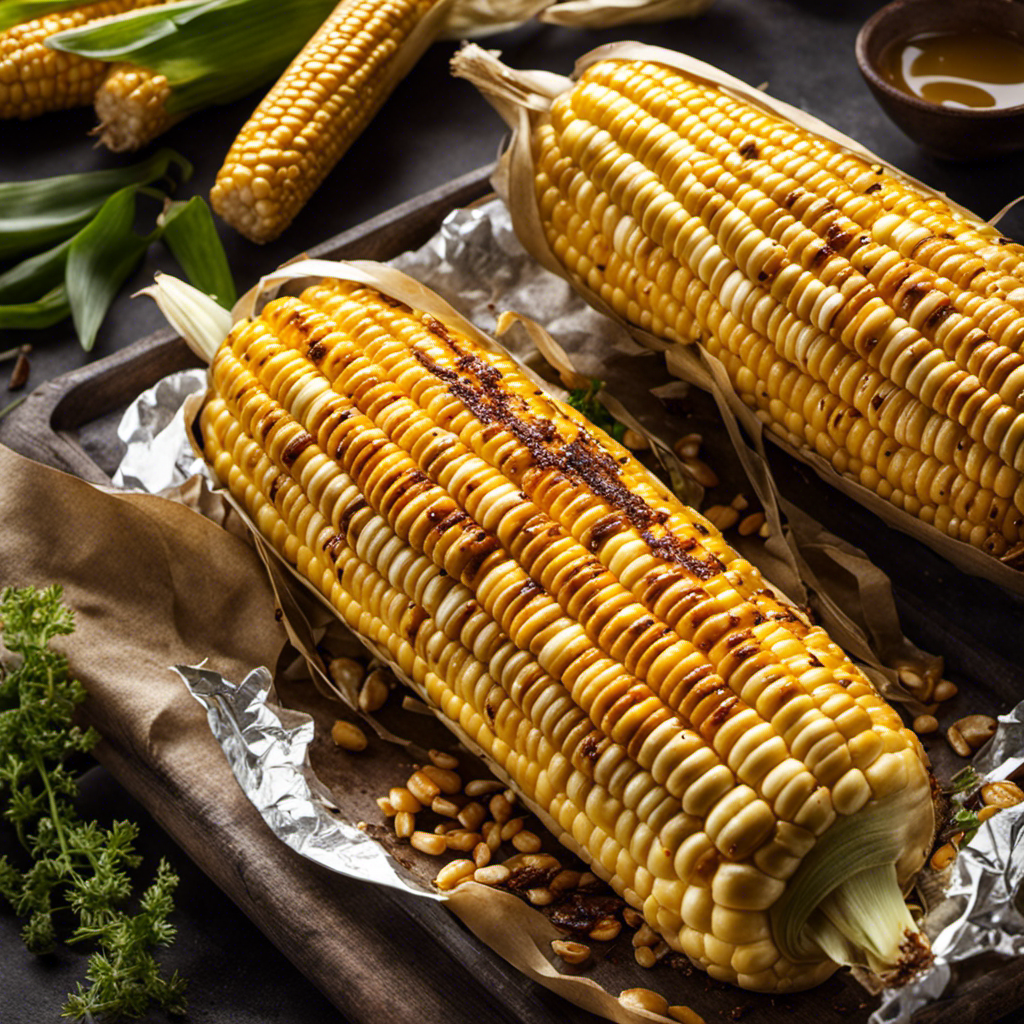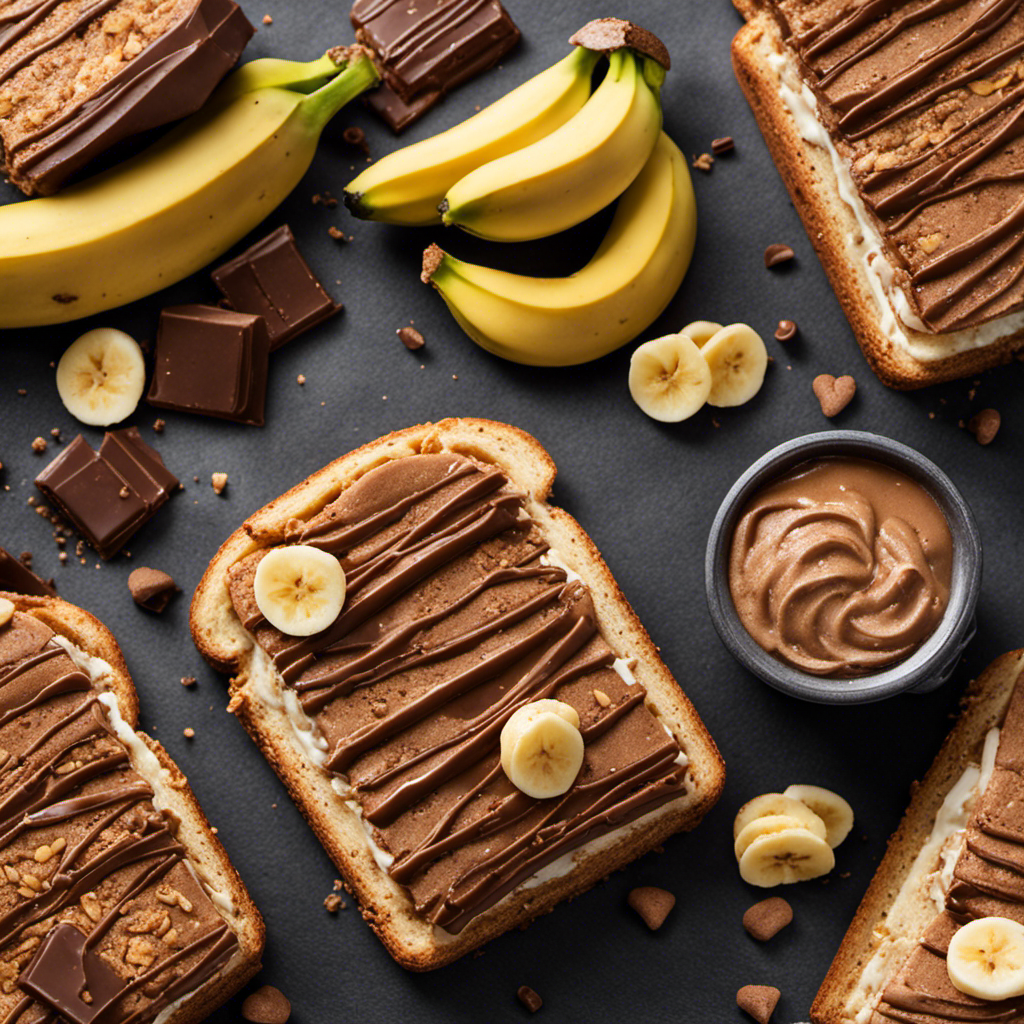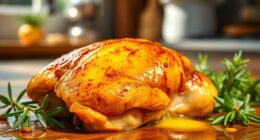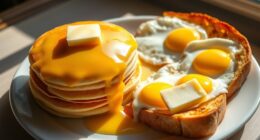I have always been fascinated by how simply melting butter can completely transform its appearance. It is like watching a caterpillar turn into a butterfly – a beautiful change happening right before our eyes.
But what exactly is happening during this process? In this article, we will delve into the science behind melting butter as a physical change.
By understanding the characteristics, factors, and applications of this transformation, we can gain a deeper appreciation for the wonders of the natural world.
Key Takeaways
- Melting butter is a physical change that involves a transformation from a solid to a liquid state without altering its chemical composition.
- Physical changes, including melting, are reversible processes that can be undone.
- The melting process is influenced by temperature, with higher temperatures leading to irreversible changes.
- The molecular arrangement of butter changes during melting, but its chemical composition remains the same.
The Definition of Physical Change
You should know that the definition of physical change is when substances undergo a transformation without changing their chemical composition. Understanding this concept is crucial in grasping the nature of melting butter as a physical change.
When butter melts, it changes from a solid to a liquid state due to the increase in temperature. The molecules within the butter gain energy and vibrate more vigorously, causing the solid structure to break down and form a liquid. This transformation does not alter the chemical composition of the butter, as the same molecules are still present.
It is important to note that physical changes are reversible, and in the case of melted butter, it can solidify again by lowering the temperature.
Characteristics of Physical Change
When discussing the characteristics of physical change, two key points that arise are the concepts of reversibility and irreversibility.
Reversible changes are those that can be undone, returning the system to its original state, while irreversible changes are permanent and cannot be reversed.
Additionally, physical changes do not result in any change in the composition of the substance undergoing the change.
It is important to understand these characteristics in order to differentiate physical changes from chemical changes.
Reversible Vs. Irreversible
The difference between reversible and irreversible changes can be understood when considering the physical change of melting butter. When heat is applied to butter, its solid form transitions into a liquid state. This change is reversible, meaning that if the heat is removed, the butter will solidify again.
The reversibility of melting is influenced by the impact of heat. The higher the temperature, the more irreversible the change becomes. At higher temperatures, the bonds between the molecules in the butter break, leading to a permanent change in its structure.
This irreversible change is due to the increased kinetic energy of the molecules, which causes them to move further apart and lose their original arrangement. Therefore, the impact of heat on the reversibility of melting plays a crucial role in determining whether a change is reversible or irreversible.
No Change in Composition
To understand the concept of no change in composition, it’s important to consider the impact of heat on the reversibility of a substance. When heat is applied to a substance, such as butter, it undergoes a physical change known as melting. This means that the butter changes from a solid state to a liquid state without undergoing any chemical reactions.
Here are three key points to understand about this process:
-
No Chemical Reaction: During melting, the butter molecules do not undergo any chemical reactions. They simply rearrange themselves to form a more fluid state.
-
State Change: Melting is a state change where the substance transitions from a solid to a liquid. The molecular arrangement changes, but the chemical composition of the butter remains the same.
-
Reversibility: Melting is a reversible process. When the melted butter cools down, it solidifies back into its original state without any changes in its chemical composition.
Understanding the concept of no change in composition is crucial in comprehending why melting butter is considered a physical change.
Understanding Melting as a Physical Change
You can understand melting as a physical change because it involves the transition from a solid to a liquid state. When a substance, such as butter, undergoes melting, the arrangement of its molecules changes from a rigid, ordered structure to a more fluid, disordered arrangement.
The factors affecting the melting point of a substance include the strength of intermolecular forces, the size and shape of the molecules, and the presence of impurities.
By observing physical changes, such as melting, we can gain insight into the properties and behavior of different substances. Melting also serves as an important process in various industries, such as food processing and material science.
Understanding the mechanisms behind melting can provide valuable information for designing and optimizing processes in these fields.
Factors Affecting the Melting Process
When considering the factors that affect the melting process, two key points come to mind: temperature and melting point, and the presence of impurities.
Temperature plays a crucial role in determining whether a substance will melt or remain solid, as it directly affects the kinetic energy of its particles.
Additionally, the melting point, which is the specific temperature at which a substance transitions from a solid to a liquid state, varies for different substances and can be influenced by factors such as pressure and molecular structure.
Moreover, the presence of impurities in a substance can significantly alter its melting behavior by lowering the melting point or causing irregular melting patterns.
Temperature and Melting Point
The melting point of butter is influenced by temperature. As a scientist, I have observed that temperature plays a crucial role in the phase transition of butter from solid to liquid. Here are three key points to consider:
-
Melting temperature: Butter has a relatively low melting temperature compared to other substances. It typically melts between 30-35 degrees Celsius (86-95 degrees Fahrenheit). This temperature range allows for easy melting and incorporation into various culinary preparations.
-
Phase transition: When butter is heated above its melting point, it undergoes a phase transition from a solid to a liquid state. At this point, the molecular structure of butter changes, and its physical properties, such as viscosity and shape, transform.
-
Thermal conductivity: The temperature at which butter melts can be affected by factors such as the presence of impurities or variations in its composition. These factors can impact the thermal conductivity of butter, altering its melting point.
Understanding the relationship between temperature and the melting point of butter is crucial for achieving desired culinary outcomes and optimizing the use of this versatile ingredient.
Presence of Impurities
The presence of impurities can affect the melting point of butter. Impurities are substances that are not part of the butter’s pure composition. These impurities can include water, salt, and other contaminants.
When impurities are present in butter, they can disrupt the uniformity of the molecules and interfere with the melting process. The impurities can create obstacles for the heat energy to be transferred efficiently, resulting in a higher melting point compared to pure butter. This means that butter with impurities will require a higher temperature to melt.
Understanding the impact of impurities on the melting point of butter is crucial for various applications, such as cooking and food processing. Observing the physical changes in butter can provide valuable insights into the effects of impurities on its properties and behavior during heating.
Observing the Physical Changes in Butter
Melting butter is a physical change that occurs when heat is applied. It is important to understand the physical changes that take place during this process. Here are three key observations to consider:
-
Melting Point: Butter has a specific temperature at which it transitions from a solid to a liquid state. This temperature is known as the melting point. When the butter reaches this point, the intermolecular forces holding its molecules together weaken, allowing them to move more freely.
-
Change in State: As the butter is heated, it undergoes a phase transition from a solid to a liquid. This change is purely physical, as no new substances are formed. The molecules in the butter rearrange themselves to accommodate the increased thermal energy.
-
No Chemical Reactions: During the melting process, no new chemical compounds are formed. The butter retains its chemical composition, only changing in its physical state. This makes melting butter a reversible process, as it can solidify again when cooled.
Understanding the physical changes that occur when melting butter is crucial for various applications in cooking and food science.
The Role of Heat in Melting Butter
In the previous subtopic, I discussed the physical changes that occur when butter melts. Now, let’s delve into the role of heat in this process.
When heat is applied to butter, it undergoes a change in state from a solid to a liquid. This transformation occurs due to the increased kinetic energy of the butter molecules, which causes them to move more rapidly and break free from their fixed positions in the solid structure.
As the temperature rises, the heat energy is transferred to the butter, causing the intermolecular forces to weaken. Eventually, these forces are overcome, and the butter molecules are able to move more freely, resulting in the liquid state.
It is important to note that this change in state is reversible. When the melted butter cools down, it will solidify again, undergoing the reverse process known as solidification.
Understanding the role of heat in these changes is crucial in various scientific fields, such as food science and materials engineering.
Applications of Physical Changes in Everyday Life
You can observe the applications of physical changes in everyday life through various examples and experiences. Physical changes refer to alterations in the state or form of matter without any change in its chemical composition.
Here are three examples of how we can observe physical changes in our daily lives:
-
Freezing water: When water is exposed to extremely low temperatures, it undergoes a physical change and transforms into ice. This process is often observed in ice cube trays or when water freezes in the form of snow.
-
Boiling water: Heating water causes it to undergo a physical change, transitioning from a liquid state to a gaseous state. This can be observed when water is heated in a kettle or when it evaporates while cooking pasta.
-
Cutting fruits and vegetables: When we cut fruits and vegetables, we are observing a physical change. The shape and size of the produce are altered without any change in its chemical composition.
Frequently Asked Questions
How Does the Process of Melting Butter Differ From Other Physical Changes?
Observing the state change of butter, the process of melting differs from other physical changes due to the retention of chemical properties. The transformation involves the conversion of a solid into a liquid without altering the composition of the substance.
Can Butter Be Melted Without the Use of Heat?
No, butter cannot be melted without the use of heat. Melting butter is a physical change that occurs when heat is applied, causing the solid butter to turn into a liquid state.
What Factors Determine the Melting Point of Butter?
Factors such as temperature, pressure, and composition determine the melting point of butter. These properties influence the arrangement of molecules, causing them to transition from a solid to a liquid state.
Are There Any Other Factors, Aside From Heat, That Can Cause Butter to Melt?
Other factors, aside from heat, that can cause butter to melt are pressure and agitation. These factors can disrupt the intermolecular forces in the butter, allowing it to transition from a solid to a liquid state.
How Can the Observation of Physical Changes in Butter Be Useful in Everyday Life?
Observation of physical changes in butter is useful in cooking and baking. By understanding the melting point of butter, I can ensure proper consistency in recipes and achieve desired results in my culinary creations.
Conclusion
In conclusion, melting butter is indeed a physical change. It involves the transformation of solid butter into a liquid state due to the application of heat. This process is influenced by various factors such as temperature and pressure.
Interestingly, did you know that the melting point of butter is around 32-35 degrees Celsius? This statistic highlights the sensitivity of butter to heat and how easily it can transition from a solid to a liquid form.
Understanding these physical changes is crucial in everyday life, especially in cooking and food preparation.
